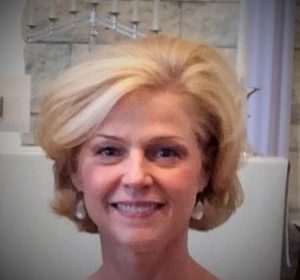Wisdom consists of the anticipation of consequences. (Norman Cousins)
Start the new year off right and decide to start a succession plan at a minimum of two levels of the organization: the middle and the executive levels.
The new supply chain issue for 2023 is human capital or having enough employees to do the job. Where will you find employees, much less upskill them for management positions? Upskilling is the training you provide current employees to do their jobs now and be prepared to do the jobs in the future so that the organization has the talent to be successful.
Face the challenges and embrace them. Never ignore a problem or think that kicking the can will work forever. The definition of insanity is doing the same thing over and over and expecting different results.
We need to grow our own in West Texas. This applies to every profession, from the lack of the Midland ISD’s ability to develop their long-term leader to the roustabout at the rig. Everyone I know talks a good game about growing their talent, but a good succession plan strategy is often missing due to short-term strategies or a lack of understanding. Succession planning is a long game.
How do you create a succession plan strategy for long-term growth, move beyond the status quo, and create viable and agile systems, policies, and procedures?
Peter Senge defines the process and beliefs that will assure your business will be successful in the future. His premises include concepts he calls Mental Models, Building a Shared Vision, Personal Mastery, Team Learning, and Systems Thinking.
Senge defines mental models as assumptions, generalizations, pictures, and images deeply rooted in our minds that influence how we understand the world and our actions. Senge says mental models must be challenged if the business will adapt and change successfully.
Leaders need to create a culture of openness wherein employees are encouraged to offer ideas to challenge old assumptions and mindsets and create something new and better than before. Everyone must feel like they have the trust and power to make something new and better than before.
The second premise is building a shared vision. To be successful, your stakeholders need to have a mental vision of what the future looks like for the organization so they will want to remain and grow with the organization.
Next, Senge discusses personal mastery. Employees must be committed to continuous learning and self-improvement to become “masters” of their current and future roles. This is the upskilling piece which I consider a two-way street. The employer guides and is open to growth for each employee, including tuition reimbursement and employee-chosen training. As an employer, you want your team to be continuous learners seeking career advancement.
Senge believes in Team Learning. People need to learn to work together, be creative, and be adaptable to change. Together we are stronger. Not everyone is Albert Einstein.
Senge’s last and most important premise is Systems Thinking. Your employees understand that the organization is not a bunch of silos but is part of a system that all fits together, and as change occurs, each piece and the system will adapt and change.
As you select a successor, train them to lead most or all necessary functions or departments so they will succeed. Every future CEO needs to spend time in finance, HR, and operations before being given the keys to the kingdom.
I would argue that without challenging an organization’s mental models, failure is the only option. Remember Kodak, Blockbuster, and Circuit City? Compare these three to Netflix and Apple. I am still kicking myself about not buying Netflix stock ten years ago.
Change your recipe for success.
Most organizations start with a business plan; a succession plan is just another business plan.
How do you select successors? Could you not do it on your own? Involve key stakeholders. Define your decision-making process, define how the process works, evaluate the process, and be consistent when applying it.
Start by doing Performance Evaluations to rate and rank your employees on primary outputs and success on objectives that align with the company’s strategy. If not, you will struggle to identify individuals’ performance and potential.
If you want to rank an employee’s performance and potential, consider using the 9-Box Model. The 9-Box Model is a well-established performance management tool for gauging employee performance. Employees can be high in some things and low in others. How the employee is rated should lead to identifying strengths and weaknesses in the current workforce and the growth potential of your employees.
Has the organization looked ahead to determine future roles necessary to move it forward, stay competitive, and have the workforce for tomorrow and next year?
Who will run things when you are gone?
Statistically, family-owned businesses fail in the second or third generation. Sakowitz was the Neiman Marcus of Houston, but it did not make it long after the passing of the original patriarch.
Recently a family-owned bank in Texas turned over control to someone other than a family member for the first time in 82 years. The combined experience at the bank with the new President and Executive Vice President represents several decades combined with the bank. The family felt comfortable that they had grown their own and upskilled the right staff, and they believed that the bank’s future would be excellent under the two non-family members. The family was not afraid of losing control. Their baby will be in great hands.
Twenty years from now, you will be more disappointed by the things you did not do than by the ones you did. (Mark Twain)
_____________________________________________________________________________________________________
“Your employees are the heart of your organization.” Dr. Michele Harmon is a Human Resource professional, supporting clients in Texas and New Mexico that range in size from five to more than 3,000 employees. Email: micheleharmon1@gmail.com










